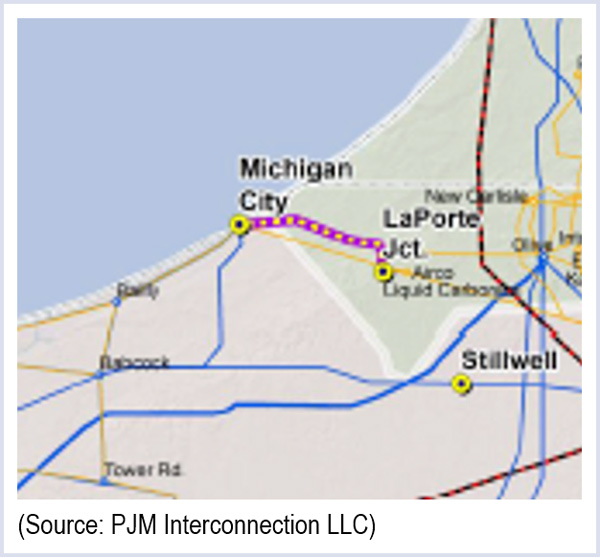By Chris O’Malley
MISO and PJM have again narrowed a list of “quick hit” flowgate projects with the potential to relieve market-to-market congestion.
After reducing their list of potential projects from 39 in March to four in April, RTO officials told the MISO-PJM Joint and Common Market Initiative meeting on Wednesday that the list had now been reduced to two.
In March, MISO officials said they and their counterparts in PJM were considering projects to address 39 flowgates responsible for about $408 million in historical congestion.
In April, the PJM-MISO Interregional Planning Stakeholder Advisory Committee whittled the list of potential projects to four. The committee said most of the potential projects were unneeded because about $279 million of the congestion would be addressed by upgrades already planned or in service and that other flowgates in the initial selection had not experienced congestion recently.
That left four recommended projects and six projects for which data was lacking. (See Quick Hit List at PJM-MISO Seam Narrowed to 4 Projects from 39.)
And Then There Were Two
At Wednesday’s MISO-PJM JCM meeting, RTO staff said two of those remained on the recommended list, after determining that the other two were already being addressed. An additional five will be monitored for recommendations in the future.
Had the two projects been in place for 2013 and 2014 — the period studied — they would have reduced congestion by $9.6 million.
One is a SCADA equipment upgrade for the 161-kV Beaver Channel-Sub 49 line, providing congestion relief of $6.9 million.
The other is the 138-kV Michigan City-LaPorte line, which is resagging in the Northern Indiana Public Service Co. section, with congestion relief of $2.7 million.
Costs for the proposed Beaver Channel project are “minimal,” while Michigan City-LaPorte is estimated at $2.3 million, according to RTO officials.
Talks are underway with transmission owners and entities that would benefit from the upgrades. The projects are to be evaluated for inclusion in MISO’s 2015 Transmission Expansion Plan (MTEP15) for recommended approval in December.
MISO identified about $99 million in remaining congestion that hasn’t been addressed for service upgrades. About $80 million of that congestion is along the Michigan interface that will be subject to further study in the second half of this year.
Deliverability Improvements
Meanwhile, MISO has introduced a proposal to remove hurdles preventing it from importing more capacity from PJM. MISO said that while the MISO-to-PJM direction is “almost fully subscribed,” the transmission capability in the PJM-to-MISO direction is “minimally utilized.” One idea contemplated is expanding an external network resource interconnection service that allows an external resource to serve network load as would an internal network resource. The external resource would require transmission service to the MISO border.
Another is a modified external network integration transmission service (NITS) concept. MISO would offer NITS to generators and allow the MISO network load to be identified in the Planning Resource Auction.
“Right now, if you’re an external generator without existing load, your only option is point-to-point service,” said Jesse Moser, manager of infrastructure studies at MISO. The RTO is seeking stakeholder feedback by June 26.
The ideas emerged as part of broader talks between the RTOs to comply with the Federal Energy Regulatory Commission’s Order 1000 compliance filing, which is due June 16.
Stakeholders at the JCM meeting were told the RTOs have agreed to most of FERC’s directives and non-substantive revisions to eliminate differences between the two RTOs’ filings. Cost allocation remains under discussion.



